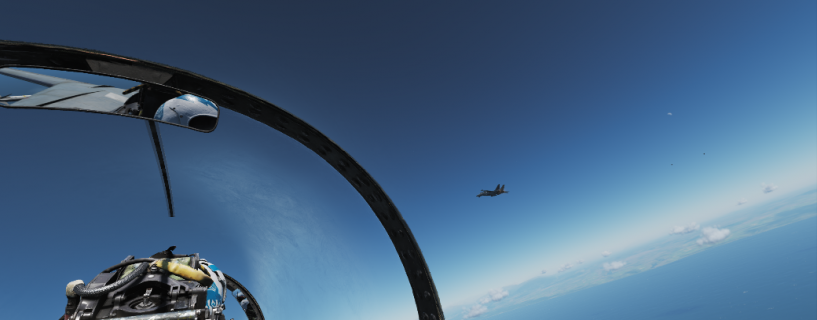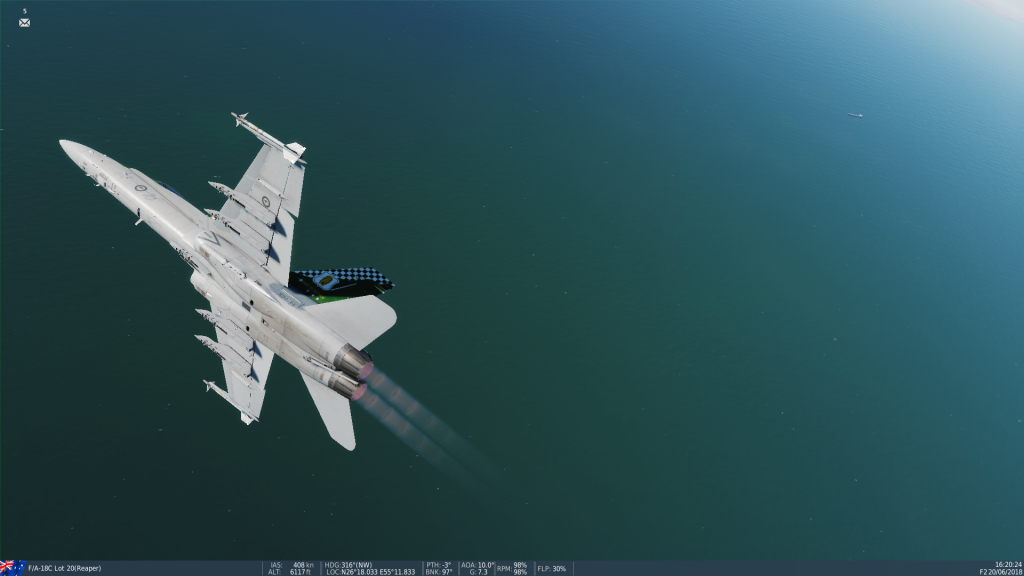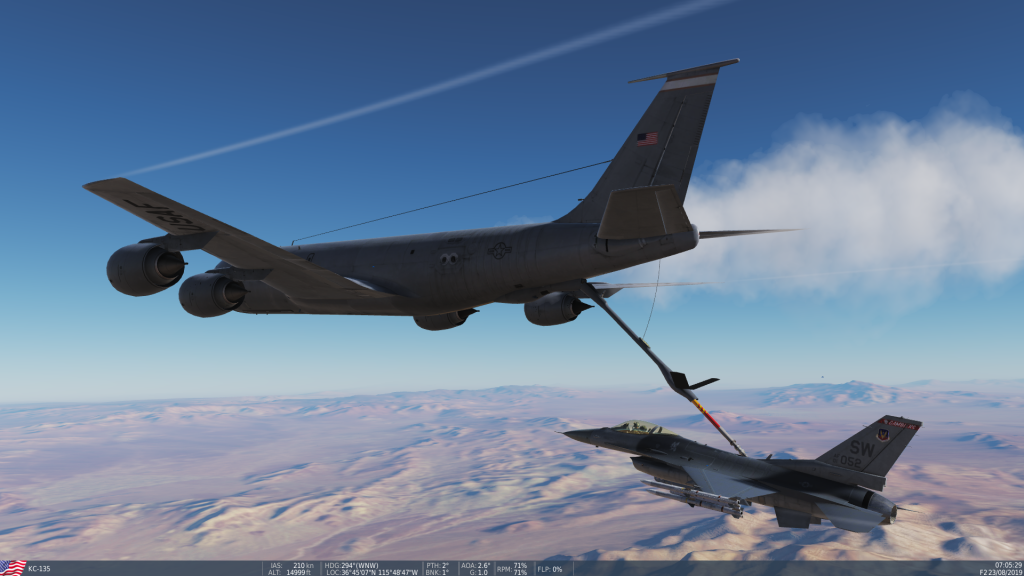
As a virtual pilot and one who loves combat simulations I’ve had the honor of being able to fly with a broad spectrum of people with a large set of different skills, from actual pilots whom have gone through combat training and know exactly what they are doing through to the average jo off the street whom well just gets in points the plane and shoots. I’ve also been flying in multiplayer one way or another now since 2002 or so and I’ve gotten because of that some thoughts that I figured I might share about things and I’ll state this right up these are simply my thoughts your welcome to agree or not. So this is the first in a few posts I’ll be doing on the topic and todays topic is….
A lot of pilots forget to fly to the strength of their aircraft.
This single statement is possibly the biggest thing that I have to comment on because a lot of people and I include myself in this, forget what the strengths of the aircraft they are flying and fighting in are. You see this rather often in DCS especially where the speed and rapid choices that have to be made seem to force people to fall back on the same traits which in a lot of cases is a turning circle fight. The issue with this is two fold however when you start to review what happens in these fights, first a lot of pilots don’t know how to fly a 1 or 2 circle fight correctly and just ‘pull’ bleeding speed when they don’t need to, but the other thing is that not all fighters are made equal. Let us take a F16 and the F18 for example, in a straight up fight the F16 over all is the ‘better’ fighter having been built specifically for that role, compared to the hornet the Viper is able to turn quicker, pull more G’s and specifically has pound for pound more thrust to weight ratio. Meaning that all things being equal you don’t want to get into a ‘rates’ fight if your in a Hornet with a viper, either nail them quickly or learn to know the differences in the airframe, such as the fact that the Hornet can maintain stability much ‘slower’ then the Viper and once slow is able to increase it’s rate of turn better then the viper ever will.

The viper on the other hand should look out for these tactics, not getting itself drawn into a ‘slow’ turning fight, rather using position to maintain it’s energy either by high/low off plane maneuvers or ideally ending the fight quickly by using it’s greater speed and maneuverability plus it’s smaller profile to get into the hornets six and remain there.
In a different jet, the F-14 we see even larger mistakes happening amongst virtual fighter pilots, first and foremost is that many forget that unlike the more modern counterparts the F-14 is not G Limited by a Flight Control System, and it’s not uncommon even for me to enter a fight at high speed, forget which airframe I’m in pull hear a crack and see nothing but black and a tumbling aircraft as the wings have been over stressed and decided that they don’t want to hold the aircraft up anymore but rather want to tumble off and into space as independent objects. Even if you survive through this often repeated mistake, it’s not uncommon for people to then fall into the habit of forgetting that the F-14 is a variable swept wing aircraft, they will often push the throttle to the fire wall and leave it there, while wondering why they never seem to be able to match a turning circle of a Hornet or a Mig despite the cat having a reputation of being an amazing fighter.
Again all this is because they are forgetting to use the strengths of the aircraft or getting ‘tunnelled’ into fighting the aircraft in one mode. The Cat especially is able to fight across almost the entire spectrum of ‘BFM’, it has amazing thrust to weight ratio, can reach extremely high speeds and yet at the same time it can if required fly extremely slow and tight circles and to fight the aircraft well in a dog fight a pilot has to remember that he has all of these options, while also remembering that there is no FCS to ‘save’ him from mistakes. In a fight between the viper and a 14 or a viper and a hornet, you can in theory (and in practice if your good enough) adapt your fighting style in the Cat to work for each airframe, against a Hornet you can either use your higher thrust to weight ratio to out climb, out run and generally maintain higher energy states or fly slower and as the wings sweep to their extended position pull higher turns, indeed the Cat is able to turn at full wing extension almost as good of a turning circle as an A-10C! and that’s not a shabby thing.

In the end though it takes time and a lot of hours in an Aircraft to learn what works for it and what doesn’t, during that period your likely to find yourself being shot down A LOT, and that can be frustrating. But if you can learn your airframe and in turn learn the pro’s and con’s of OTHER airframes, you can start to learn how to turn your own good and bads to your advantage.
Also don’t forget even online if you don’t NEED to fight to achieve your objective then don’t fight. The best offense is to never have to worry about getting offensive in the first place! If you can get in hit your target and get out with out ever having to engage an enemy fighter, your job is done. If you can disengage and run to hit your target, Job’s done. There is NEVER any shame in running from the fight … unless the missions to well pick a fight.





